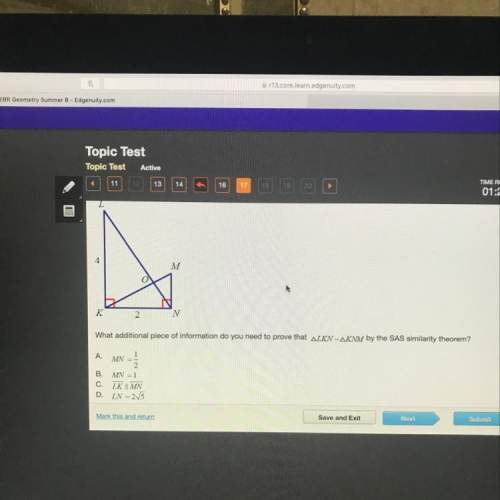
Mathematics, 07.07.2020 14:01 ultimatesaiyan
Suppose you doubt the assumption that the mean age of the stars is 3.3 billion years, but you don't know whether the true mean age is less or greater than 3.3 billion years.
Required:
a. To test whether the population mean is 3.3 billion years, what would your null and alternative hypotheses be?
b. What test will you use, how will the test work, and what are the conditions necessary to use the test? Does your situation meet those conditions?
c. Calculate yoour test statistic and P-value. Show your work, including the formulas you used to calculate the statistic.

Answers: 2


Another question on Mathematics

Mathematics, 21.06.2019 18:10
The number of branches on a tree demonstrates the fibonacci sequence. how many branches would there be on the next two levels of this tree? 13 | | | m branches
Answers: 3


Mathematics, 21.06.2019 22:00
Select the correct answer from each drop-down menu. consider the following polynomials equations. 3x^2(x-1) and -3x^3+ 4x^2-2x+1 perform each operation and determine if the result is a polynomial. is the result of a + b a polynomial? yes or no is the result of a - b a polynomial? yes or no is the result of a · b a polynomial? yes or no
Answers: 1

Mathematics, 21.06.2019 23:00
Find the distance between c and d on the number line c=3 and d=11
Answers: 1
You know the right answer?
Suppose you doubt the assumption that the mean age of the stars is 3.3 billion years, but you don't...
Questions

Social Studies, 27.11.2019 21:31

History, 27.11.2019 21:31

Mathematics, 27.11.2019 21:31




History, 27.11.2019 21:31

Mathematics, 27.11.2019 21:31

English, 27.11.2019 21:31

Mathematics, 27.11.2019 21:31

Mathematics, 27.11.2019 21:31

History, 27.11.2019 21:31

Mathematics, 27.11.2019 21:31

Health, 27.11.2019 21:31


Computers and Technology, 27.11.2019 21:31

Mathematics, 27.11.2019 21:31



Geography, 27.11.2019 21:31

 :
:  = 3.3 billion years
= 3.3 billion years  :
:  3.3 billion years
3.3 billion years ~ N(0,1)
~ N(0,1) = sample mean age of stars = 3.4 billion years
= sample mean age of stars = 3.4 billion years = population standard deviation = 0.4 billion years
= population standard deviation = 0.4 billion years
 1.77)
1.77)  = 0.0768.
= 0.0768.


